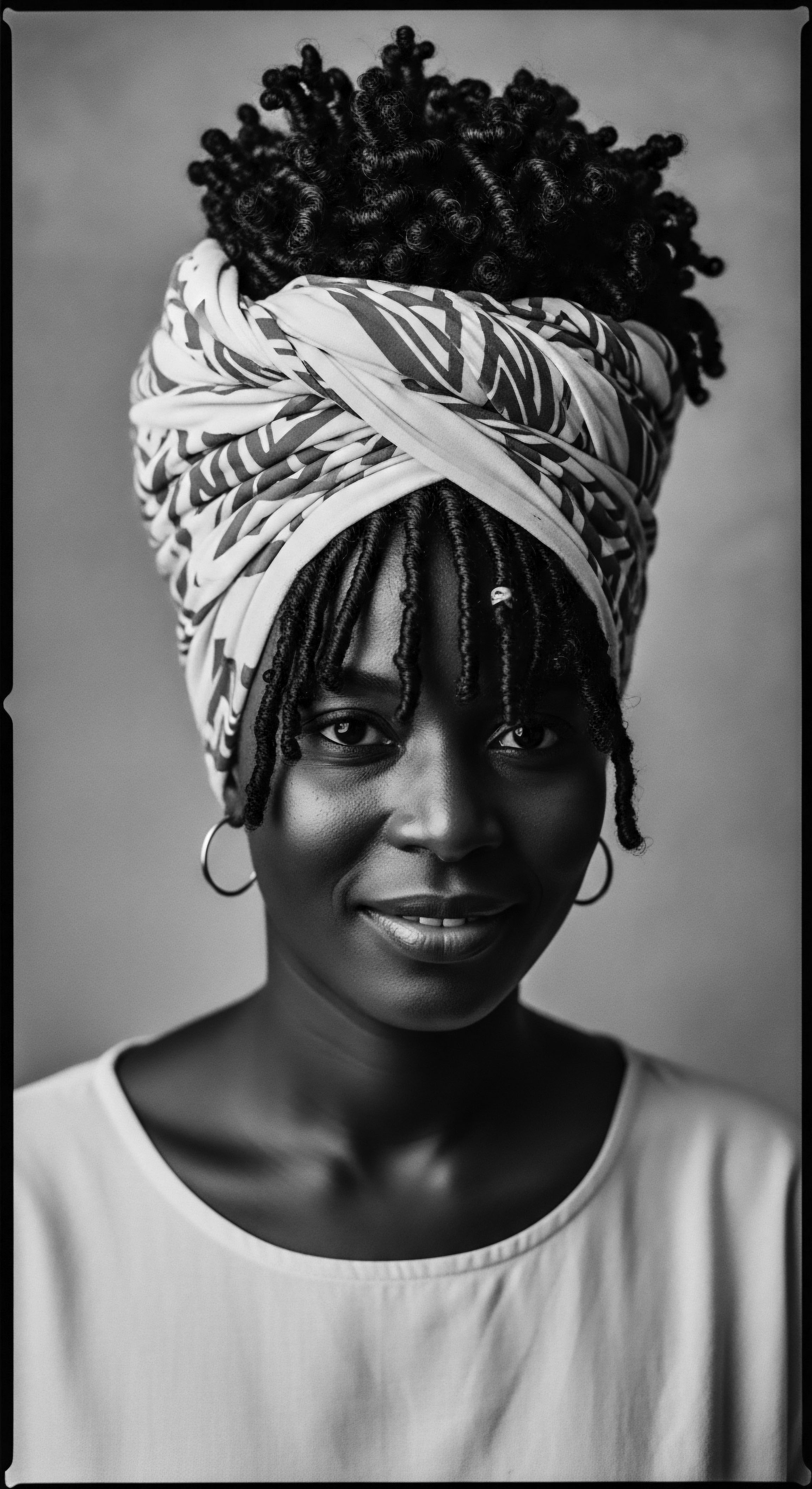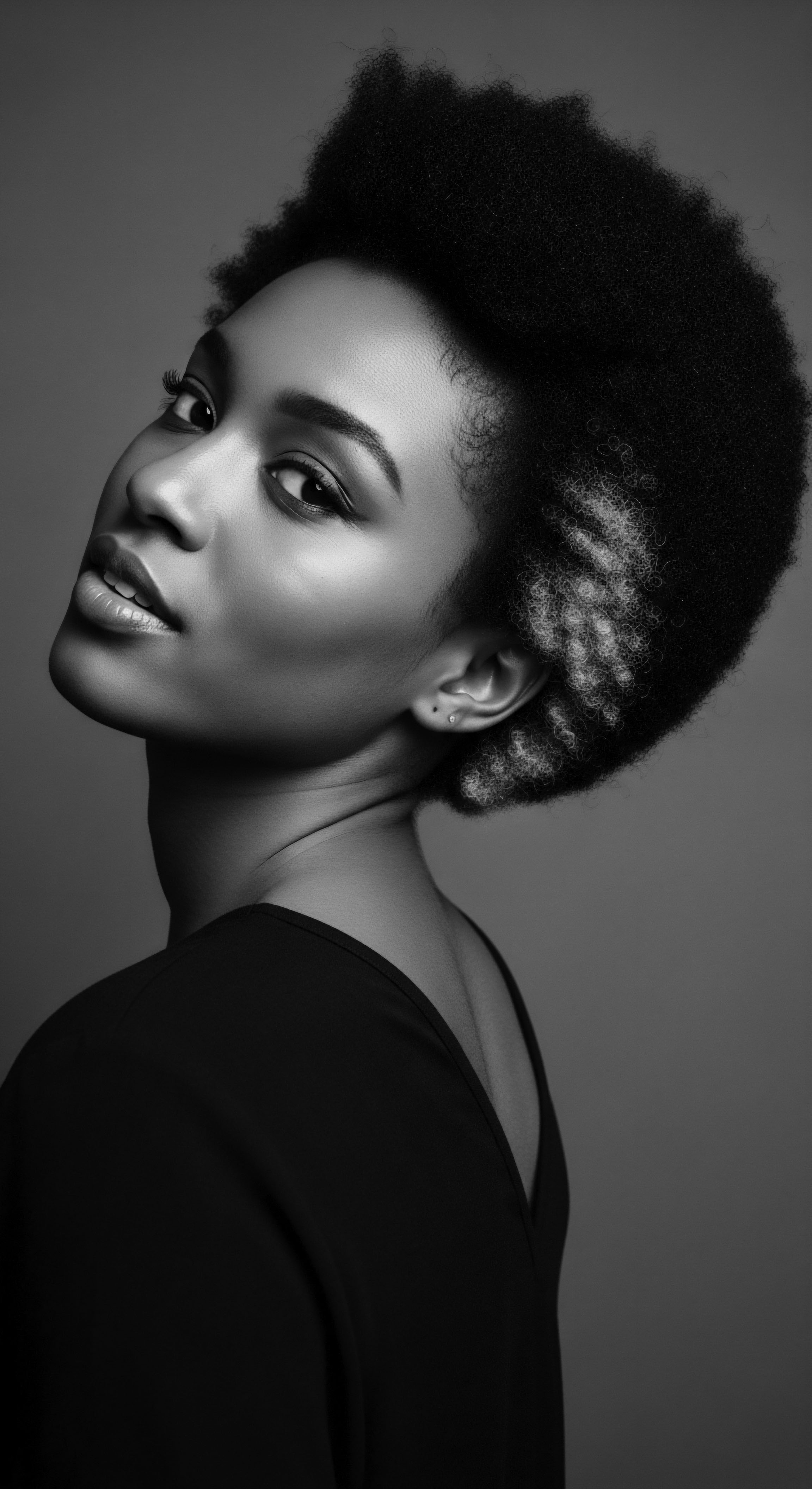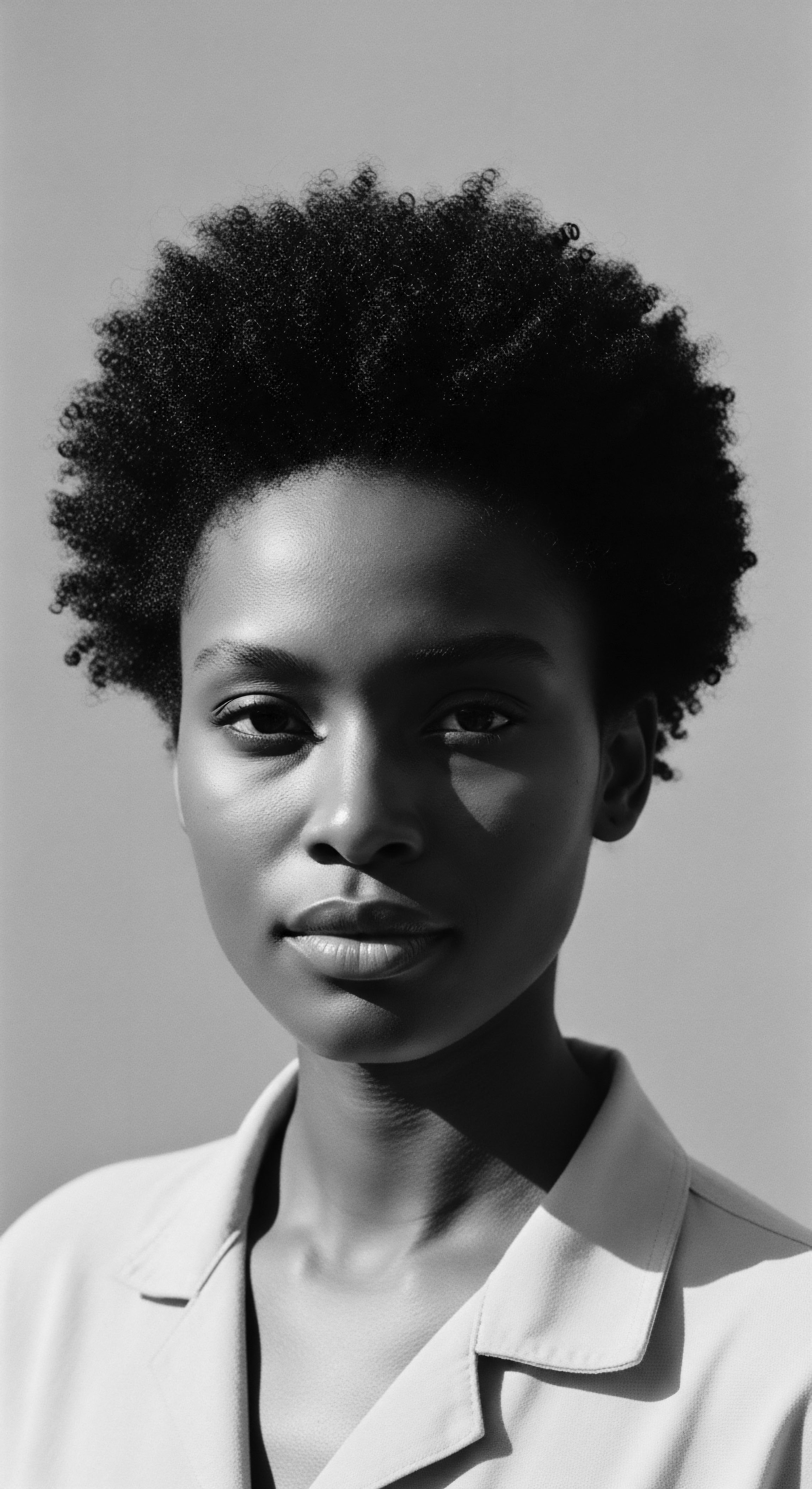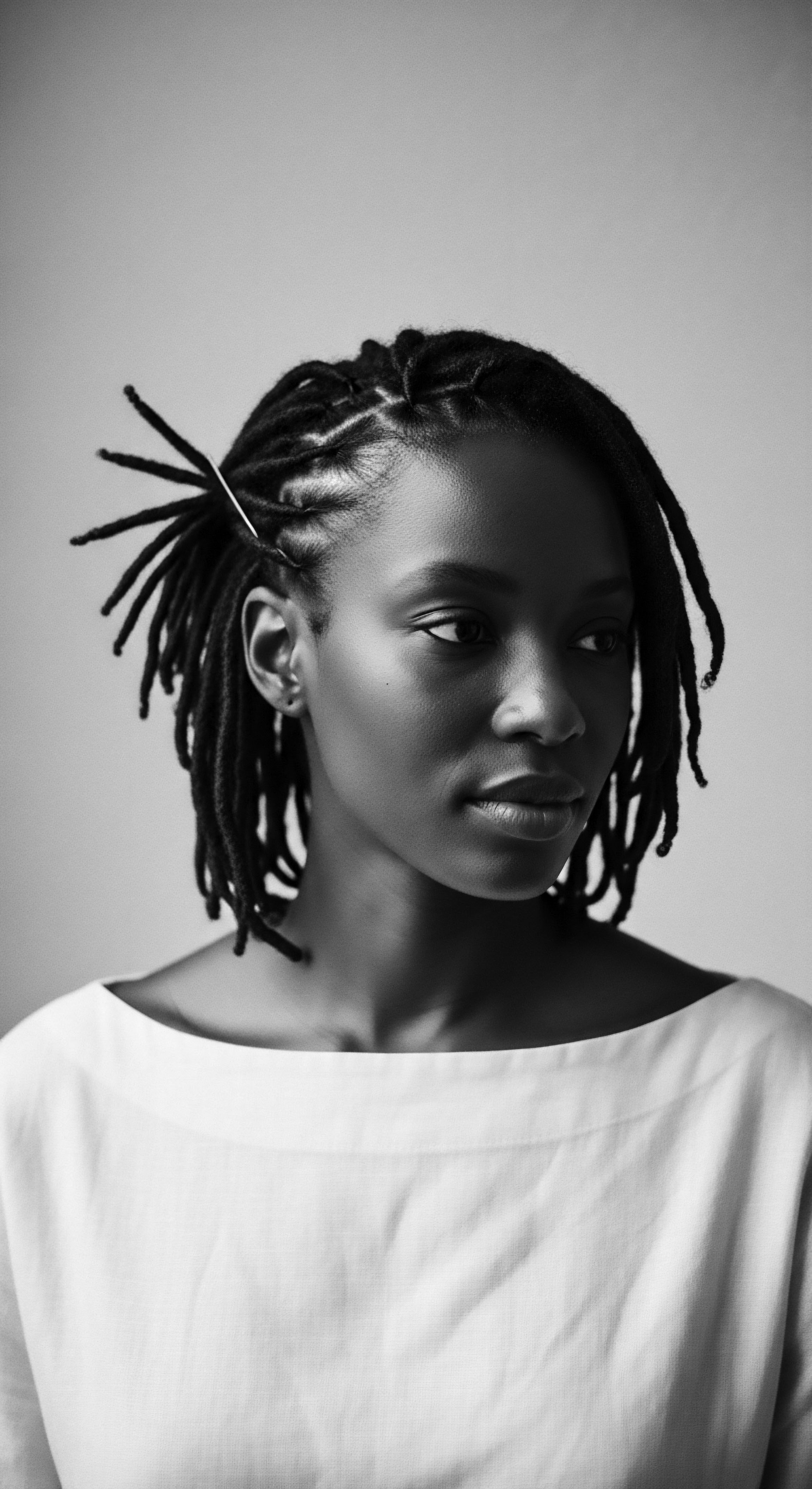
Roots
Consider, if you will, the deepest fiber of who we are—a lineage inscribed not only in our bones and blood, but also within each coil, each twist, each unique undulation of hair that springs from our very being. It is a biological marvel, certainly, yet for Black and mixed-race communities across the globe, it holds something far beyond mere biology. Hair, in its natural state, has always been a living archive of identity, a declaration of belonging, and a map of ancient wisdom.
But how, then, have the whispers of history, sometimes benign, often cruel, shaped our collective perception of this inherited crown? How did the elemental biology of our hair become entangled in the pervasive grip of societal biases, and what echoes of that history continue to influence care and self-perception today?
The earliest understandings of textured hair, long before the rigid categorizations of later eras, were rooted in reverence. Across pre-colonial African societies, hair was an intimate extension of the self, a visual language conveying status, marital standing, age, lineage, and spiritual connection. A person’s identity was visible in their intricate coiffure, a testament to the skilled hands that crafted it (Sieber & Herreman, 2000). The density, curl pattern, and resilience of textured hair were not viewed as anomalies but as powerful expressions of life force and inherent beauty.

What Does Hair Anatomy Tell of Our Ancestors?
When we observe the microscopic structure of textured hair, we find unique characteristics that defy simplistic notions of “normalcy.” Unlike the typically round cross-section of straight hair, highly coiled strands often display an elliptical or flattened shape, leading to the characteristic bends and twists. This shape, coupled with an uneven distribution of keratin within the hair shaft, contributes to its curl. The cuticle, the outermost protective layer, can also lift more easily at the curves, making textured hair inherently more susceptible to moisture loss and fragility. Early Eurocentric scientific observations, however, often misinterpreted these biological differences not as variations of human diversity but as markers of inferiority.
The language used to describe Black hair in colonial texts often reflected prevailing racial hierarchies, labeling natural hair as “unruly,” “kinky,” or “nappy,” words steeped in derogatory intent that erased the intrinsic beauty and structural integrity of these strands. This historical framing of hair anatomy, detached from its cultural and aesthetic value, laid groundwork for enduring biases.

How Did Colonial Views Distort Hair Classification?
The imposition of colonial rule brought with it a profound disruption of indigenous hair traditions and perceptions. The act of forcibly shaving the heads of enslaved Africans upon their arrival in the Americas served as a brutal, deliberate act of dehumanization. This practice aimed to strip individuals of their spiritual ties, their communal markers, and their personal identity, reducing them to chattel (Randle, 2015, p.
116; Sieber & Herreman, 2000). It was a systematic effort to sever the deep connection between hair and personhood, replacing centuries of rich cultural expression with a forced anonymity.
The enforced shaving of enslaved Africans’ heads was a deliberate act to erase identity and cultural lineage.
Following this foundational violence, formal hair classification systems emerged, often reflecting and reinforcing prevailing racial biases. Systems that later categorized hair by numbers and letters (e.g. 4C, 3B) initially sought a scientific objectivity that often overlooked the lived experiences and historical context of textured hair.
While some modern classification tools offer useful descriptive guides, their conceptual forebears were often rooted in a desire to compare and rank hair textures against a Eurocentric ideal, rather than simply describe them. This created a hierarchy, subtly—and sometimes overtly—suggesting that hair closer to European textures was somehow more desirable or “better.”
The vocabulary we inherited for textured hair often bears the scars of these historical biases. Terms such as “good hair” and “bad hair” became internalized markers of perceived social value, reflecting a painful colonial legacy where hair texture determined proximity to privilege. This lexicon, insidious in its simplicity, perpetuated self-doubt and compelled generations to seek alteration.
Even the natural growth cycles and influencing factors on hair health have been subject to biased interpretations. Traditional practices considered environmental conditions, diet, and spiritual well-being as integral to hair vitality. Colonial narratives, however, often dismissed such ancestral wisdom as superstition, promoting imported, often damaging, products and practices over time-honored methods.

Ritual
The hands that braid, twist, and adorn tell stories, echoing generations of care and community. The shaping of textured hair has always been a ritual, a connection to ancestral practices, and a celebration of living heritage. However, the path of this heritage has been fraught with challenges, as historical biases have sought to control, diminish, and redefine what is considered acceptable, or even beautiful. Our hair care practices, from ancient traditions to contemporary regimens, bear the indelible marks of this struggle and resilience.

What Ancestral Roots Do Protective Styles Reveal?
Long before chemical straighteners and heat tools became common, protective styles like braids, twists, and locs held profound cultural meaning. These styles were not merely aesthetic choices; they served practical purposes of protection, but more significantly, they acted as visual cues for social identification, spiritual beliefs, and tribal affiliation (Tharps, 2021). Consider the intricate cornrows of West Africa, which could identify a person’s community or even encode messages. During the transatlantic slave trade, some enslaved African women, particularly rice farmers, skillfully braided rice seeds into their hair as a means of survival, transporting this vital sustenance to new, foreign lands.
Others used cornrow patterns as maps, charting escape routes from plantations. This deep history reveals hair as a tool of ingenuity and resistance, a testament to resilience in the face of profound oppression.
Hair served as a secret language, a map, and a source of hope during oppressive times.
Yet, as the centuries turned, colonial powers and later, dominant societal norms, began to legislate and stigmatize these ancestral practices. The infamous tignon laws enacted in Spanish colonial Louisiana in the late 18th century mandated that women of African descent cover their hair with a simple knotted headcloth, aiming to diminish their beauty and social standing, which was often expressed through elaborate hairstyles and adornments. This historical measure was a direct assault on the visual expression of identity and heritage.
Similar restrictions surfaced in school environments in South Africa during apartheid, where Black students were often forced to cut their hair short or prohibited from wearing certain styles like dreadlocks, sometimes facing expulsion for non-compliance. These policies sought to enforce conformity to Eurocentric beauty standards, erasing visible markers of African heritage from public spaces.

How Do Hair Tools And Techniques Speak of Cultural Transformation?
The introduction and widespread adoption of chemical straighteners and harsh heat tools marked a significant, and often damaging, transformation in textured hair care practices. The pressure to conform to Eurocentric beauty ideals, where straight hair symbolized professionalism and social acceptance, led many Black women to embrace these altering methods. Madam C.J. Walker, a pioneer in Black hair care, built an empire selling products designed to address hair loss and growth, but also to aid in straightening, responding to a real need for hair manageability in the face of societal prejudice.
This shift was not simply a stylistic preference; it was a deeply ingrained response to systemic biases that linked natural Black hair to perceptions of being unkempt, unprofessional, or less desirable. For generations, the pursuit of “straightened” hair became a prerequisite for social mobility and acceptance in many spheres of life, including employment and education. The tools of our hair care, therefore, have been shaped by a history of both ancestral resourcefulness and imposed conformity.
| Historical Period/Context Pre-Colonial African Societies |
| Hair Practice/Style Braids, twists, locs |
| Societal Significance or Bias Displayed tribal affiliation, social status, age, marital status, or spiritual beliefs. Highly valued as identity markers. |
| Historical Period/Context Transatlantic Slave Trade |
| Hair Practice/Style Shaved heads |
| Societal Significance or Bias Forced upon enslaved individuals to strip identity, dehumanize, and sever cultural ties. |
| Historical Period/Context 18th Century Colonial Louisiana |
| Hair Practice/Style Tignon Laws (mandated head coverings for Black women) |
| Societal Significance or Bias Attempted to suppress the perceived allure and social standing of women of color through their elaborate hairstyles. |
| Historical Period/Context Early 20th Century (Post-Slavery) |
| Hair Practice/Style Chemical relaxers, hot combs |
| Societal Significance or Bias Promoted to achieve "straight" hair, aligning with Eurocentric beauty standards for professionalism and acceptance. |
| Historical Period/Context 20th Century South African Schools |
| Hair Practice/Style Banning of dreadlocks, specific natural styles |
| Societal Significance or Bias enforced conformity to European beauty norms, often resulting in punishment or expulsion for Black students. |
| Historical Period/Context The practices surrounding textured hair reveal a continuous tension between cultural expression and imposed standards across historical periods. |
The tools themselves—from elaborate bone and wooden combs of antiquity to the modern blow dryers and flat irons—tell a story. Traditional tools were extensions of communal care, often handcrafted with precision and imbued with spiritual meaning. The emergence of the hot comb and later chemical relaxers, while offering solutions for managing hair, also introduced potential damage and dependency. The narrative of textured hair styling is thus a complex interplay of ancient ingenuity, adaptation to oppression, and a persistent drive for self-expression.

Relay
The journey of textured hair care, from ancient ritual to modern regimen, has been a relentless relay race through time, carrying the weighty baton of inherited bias. The effects of historical prejudice extend far beyond mere aesthetics; they penetrate the very fabric of identity, influencing our health, our economic standing, and our social acceptance. The pursuit of “acceptable” hair has, for many generations, come at a tangible cost.

How Do Historical Biases Impact Present Day Health and Wellness?
The quest for hair conformity, often driven by a need for social acceptance, led to widespread use of chemical relaxers among Black women for decades. These products, designed to permanently alter hair texture, often contained highly caustic ingredients. The long-term health implications of such chemical exposure have only recently begun to receive the attention they deserve. Studies reveal disturbing connections between frequent relaxer use and specific health conditions.
For instance, a 2023 Boston University study indicates that Black women who used relaxers more than twice a year or for over five years faced a 50% increase in uterine cancer risk. This startling statistic unveils a grim consequence of beauty standards imposed by historical biases.
The chemicals found in relaxers, such as phthalates, parabens, and formaldehyde-releasing preservatives, are known endocrine disruptors. These compounds can mimic or interfere with the body’s hormones, potentially leading to hormone-related cancers. The link between relaxer use and increased risks of breast cancer and ovarian cancer has also been observed in several studies.
This connection between hair products and severe health disparities underscores the profound impact of historical beauty norms on the health of Black women. It is a sobering testament to how systemic pressure to conform to Eurocentric standards has led to tangible, negative health outcomes for communities.
The health implications are not just physical. The constant societal pressure to alter natural hair can contribute to psychological burdens, affecting self-esteem and mental well-being. The act of maintaining a straightened appearance often involved significant time and financial investment, a hidden tax on simply existing with natural hair in a world that often deemed it undesirable.

In What Ways Does Hair Continue To Shape Professional Standing?
The echoes of historical biases are particularly pronounced in professional and educational settings. Despite growing awareness and advocacy, textured hair styles continue to face disproportionate scrutiny and discrimination. Research from Dove and LinkedIn in 2023 revealed that Black women’s hair is 2.5 times as likely as white women’s hair to be perceived as “unprofessional”. This perception often forces Black women to alter their hair for job interviews, with 66% reporting such changes.
Over 20% of Black women aged 25–34 have even been sent home from their jobs because of their hair. Such incidents are direct manifestations of deeply ingrained racial biases that equate Eurocentric hair textures with professionalism.
The societal policing of Black hair has led to legislative action. The CROWN Act (Creating a Respectful and Open World for Natural Hair), first introduced in 2019 by California State Senator Holly Mitchell, seeks to prohibit discrimination based on hair texture and protective styles associated with race, such as braids, locs, twists, and knots. This legislation directly addresses the historical biases that have deemed natural Black hair as unprofessional or inappropriate in schools and workplaces. The movement behind the CROWN Act seeks to reclaim the narrative of Black hair, asserting its rightful place as an expression of cultural heritage and individual identity, free from judgment and prejudice.
The progress of the CROWN Act, passed in several states and introduced at the federal level, represents a vital step towards dismantling these pervasive biases. It acknowledges that hair discrimination is not an isolated issue but a continuation of racial discrimination, denying individuals opportunities based on their natural appearance. This legislative effort aims to create environments where all hair textures are respected and celebrated, rather than policed or penalized.
- Historical Precedent ❉ Discriminatory policies, such as the tignon laws of 18th-century Louisiana, illustrate early attempts to control Black women’s hair as a symbol of identity and perceived social standing.
- Health Outcomes ❉ Prolonged use of chemical relaxers, often driven by societal pressure, is now linked to increased risks of uterine and other hormone-related cancers for Black women.
- Modern Advocacy ❉ The CROWN Act represents a contemporary legislative response to combat ongoing discrimination against textured hair in professional and educational spaces.

Reflection
Our collective journey through the historical landscape of hair care and identity unveils a profound truth ❉ a single strand is never truly alone. It carries the weight of history, the joy of ancestral wisdom, and the promise of a future where true self-acceptance blossoms. The textured hair on our heads stands as a vibrant testament to resilience, a living chronicle of resistance against centuries of bias. Each coil, each curl, each loc whispers stories of survival and creativity, reminding us that beauty, in its most authentic form, is inherently diverse and deeply rooted.
Every strand of textured hair carries the vibrant legacy of resilience and self-determination.
This heritage, once suppressed, now rises with renewed power, guiding us to care for our hair not just as a physical attribute, but as a sacred connection to those who came before us. It challenges us to look beyond fleeting trends and imposed standards, seeking instead the wisdom embedded in traditional practices and the strength found in celebrating our innate qualities. The path ahead invites us to honor the elemental biology of our hair with informed care, to reclaim ancient rituals with modern understanding, and to assert our identities with unbound freedom. As we continue to learn, to grow, and to redefine beauty on our own terms, we contribute to a living archive, ensuring that the soul of each strand remains celebrated, protected, and revered for generations to come.

References
- Johnson, A. & Bankhead, C. (2014). The politics of black hair.
- Randle, R. (2015). Hair story ❉ Untangling the roots of black hair in America.
- Sieber, R. & Herreman, F. (2000). Hair in African art and culture.
- Tharps, L. (2021). Hair story ❉ Untangling the roots of Black hair in America. (As cited in CBC Radio article, 2021).
- Boston University School of Public Health. (2023). Study finds link between hair relaxer use and increased uterine cancer risk. (As cited in NewYork-Presbyterian Health Matters article, 2024).
- Dove and LinkedIn. (2023). CROWN workplace research study. (As cited in Economic Policy Institute article, 2023).
